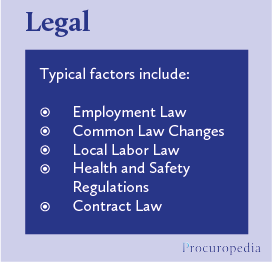Definition
A PEST/PESTLE/STEEPLE analysis is a construct that helps analyze the external environment and influences that impact the supply base. It provides a concise way of market investigation and analysis to support procurement, supplier and category strategies.
Templates

Need more help? Have a request? Please drop us a line...






